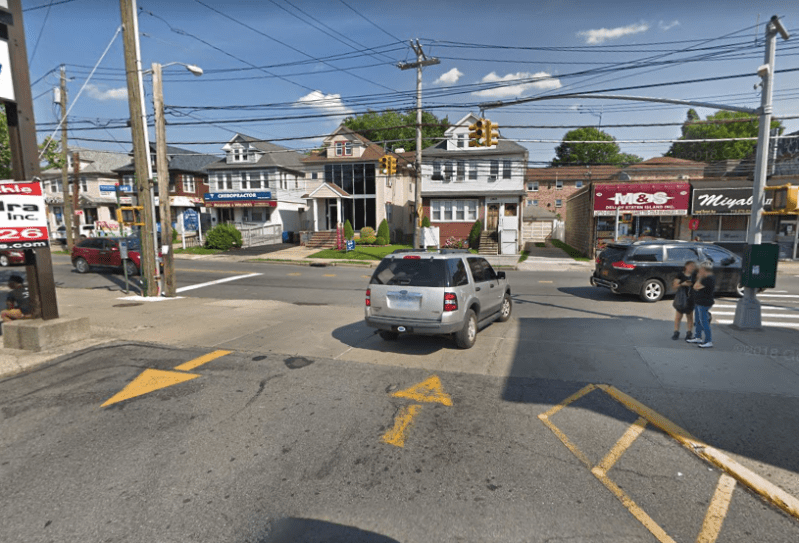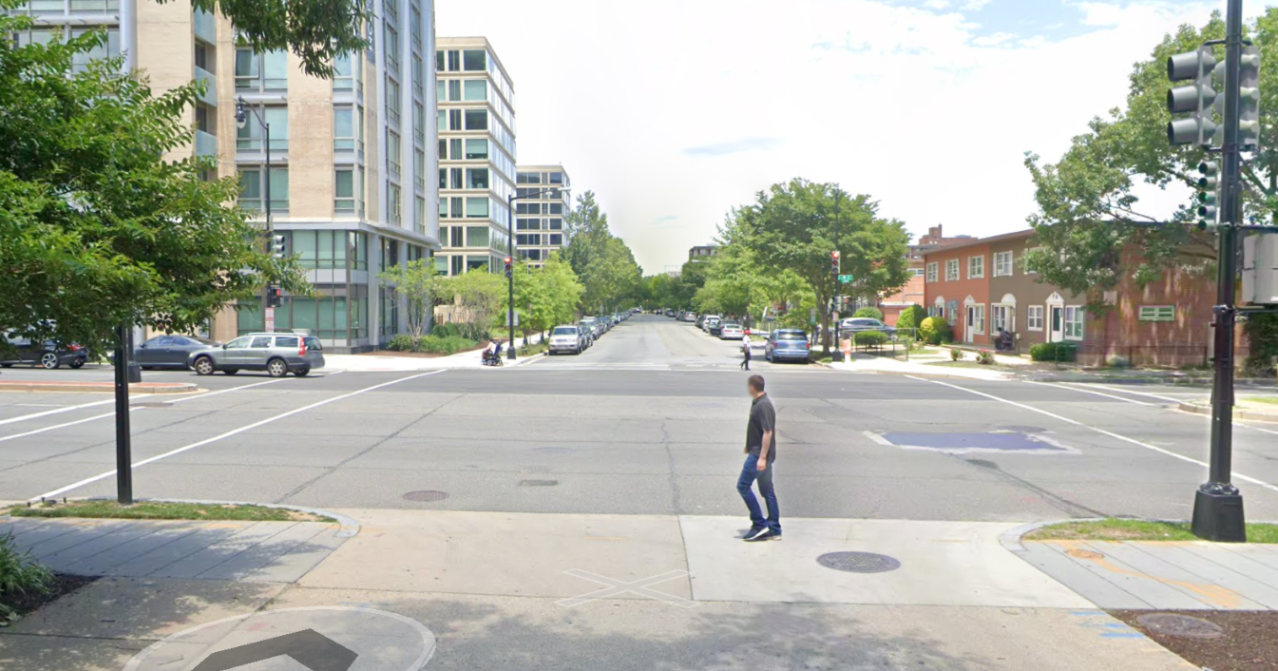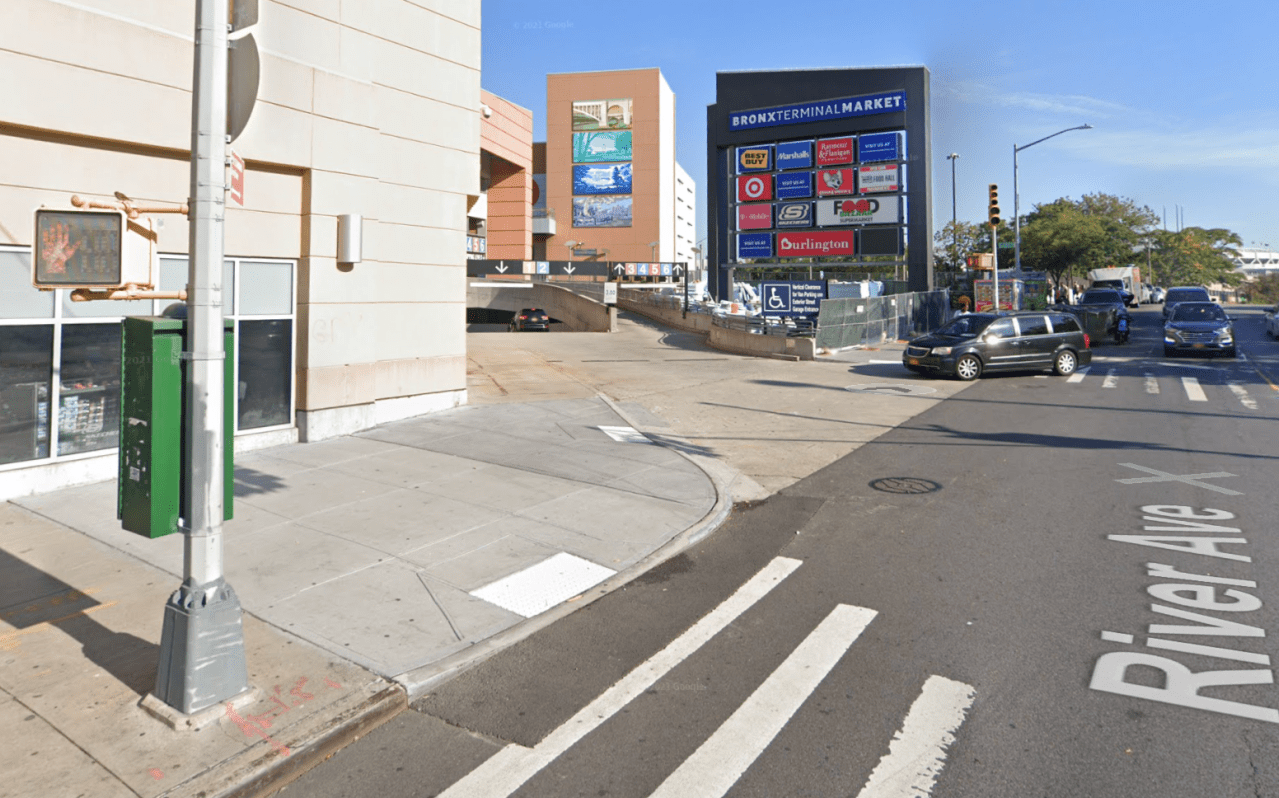OPINION: Let’s Fix These Killer ‘Signalized Sidewalks’
A flawed intersection design helped lead to the traffic death of a toddler on Staten Island. Here's what we must do — and which intersections around the city to avoid.


On Oct. 29, a driver exiting a shopping-center parking lot on Forest Avenue near Veltman Avenue on Staten Island ran over and killed 2-year-old Autumn Garrison, who was walking on the sidewalk.
Generally, such a killing would be considered a clear-cut case of driver negligence: Under state law, drivers always must “exercise due care to avoid colliding with any pedestrian upon the roadway,” and people walking on a sidewalk almost always have the right-of-way. Moreover, drivers must yield when backing out of their driveway, when turning into a parking lot, or elsewhere when crossing a sidewalk.
Unfortunately, the tragedy was not so clear cut — and therein lies a tale of bad street design that needs to be fixed and intersections people should avoid until that’s done. With the impending passage of the Build Back Better Act, municipalities across the country should identify such locations for remediation.
The “sidewalk” in question where little Autumn was killed is an especially pernicious kind of intersection — a “signalized sidewalk.” The parking lot exit has a traffic light, so pedestrians do not always have the right-of-way there. The exit is a crosswalk that looks exactly like a sidewalk except for the signal. Its flawed design does not provide pedestrians with the usual visual cues of a marked crosswalk: curb ramps and detectable warnings. Making things even more confusing, the three other driveways in and out of the parking lot where Autumn died are not signalized.
Thus, the driver who killed the toddler likely won’t be penalized because he or she may have had a green light. Police reports already have absolved the motorist by stating that the tot “walked in front of the vehicle.”
Such dangerous crosswalks that look like sidewalks are widespread throughout the city and country. Examples include:
- Third Avenue and First Street in Brooklyn — a gated driveway to a self-storage facility:
- Third Street off Third Avenue in Brooklyn:
- College Point Boulevard and 37th Avenue in Flushing — a gated driveway:
- Third Street SW at M Street SW in Washington, D.C. — a private parking lot driveway which is signalized, but does not include pedestrian signals at the driveway:
Without detectable warnings, such as truncated domes (the bumpy, rubberized warning mats at ADA-compliant curbs), and Accessible Pedestrian Signals (the squawky devices that supply audible and vibrotactile walk indications), blind persons (and many others) would not realize that they did not have the right of way — as they would have a right to expect on an otherwise normal stretch of sidewalk.
Such sidewalks also fail the city “kid maxim”: “You can run ahead, but you must stop at the corner!”
Signalized sidewalks are not the only kind of flawed intersection. Other bad designs look more like “streets” with curbs and curb ramps and require pedestrians to cross at street level — but lack crosswalk markings. Here are two:
- River Avenue and East 151st Street in the Bronx — at the entrance to a shopping mall’s parking garage:
- Vernon Boulevard near 10th Street in Astoria — at the entrance to a private parking lot and adjacent to a park and waterfront bike route:
Streetsblog commenters probably could add more locations!
Why do we have signalized sidewalks?
Several reasons: Our traffic industry spends an inordinate amount of time and money accommodating drivers while ignoring people walking and bicycling. Many existing signalized sidewalk locations pre-date the ADA and simply haven’t been upgraded to meet the code.
Further, most driveways are not designed by public agencies but rather are designed and built by developers who’ve received approval from a public agency through a plan review, which often requires a Traffic Impact Analysis. Such reviews need significant reform, because such analyses have a bias toward smoothing traffic flow, often at the expense of public safety. They often focus only on addressing the needs of the property and not on the “big picture”: the hazards a project may create for street users, especially pedestrians and cyclists.
Such studies must clearly ask: “How does adding a parking lot and driveway affect people walking on a sidewalk? Or any bike lanes? Will adding signals negatively affect people walking on a sidewalk?”
What to do? At a minimum, we recommend the following:
- Establish a “sidewalk sanctity” rule to ensure uniform application of an accessible, raised crosswalk design in urbanized areas following the NACTO Urban Street Design Guide: “At driveways, sidewalks should be maintained at-grade through the conflict zone.”
- Inventory signalized sidewalk locations and create a program to correct deficiencies — especially with regard to accessibility. The crosswalks should be clearly marked and have tactile surfaces and accessible signals.
- “Unmarked crosswalks” should be explicitly prohibited.
- Traffic Impact Analyses must be changed to require a real safety assessment and to address corridor-safety problems for all modes, not just the design of the property and traffic flow for motorists.
Sidewalks are places where children ride their bikes, run ahead to the corner, or lag behind their caregivers. They are places for children to gain independence and stretch their little legs. With funding from the recently passed infrastructure bill, let’s proactively fix such dangerous sidewalks before we lose anyone else. Let’s fix them for Autumn.
Michael King is an urban planner and professional traffic calmer. Follow him on Twitter at @trafficcalmer. Bill Schultheiss (@schlthss) is director of design and engineering at tooledesign.com.











